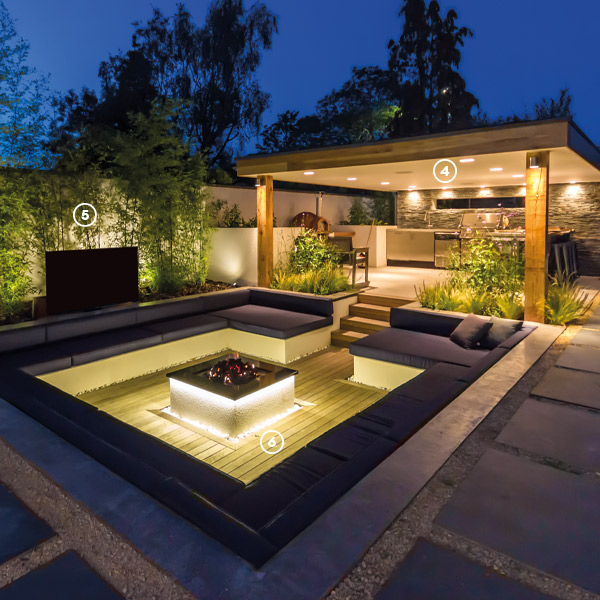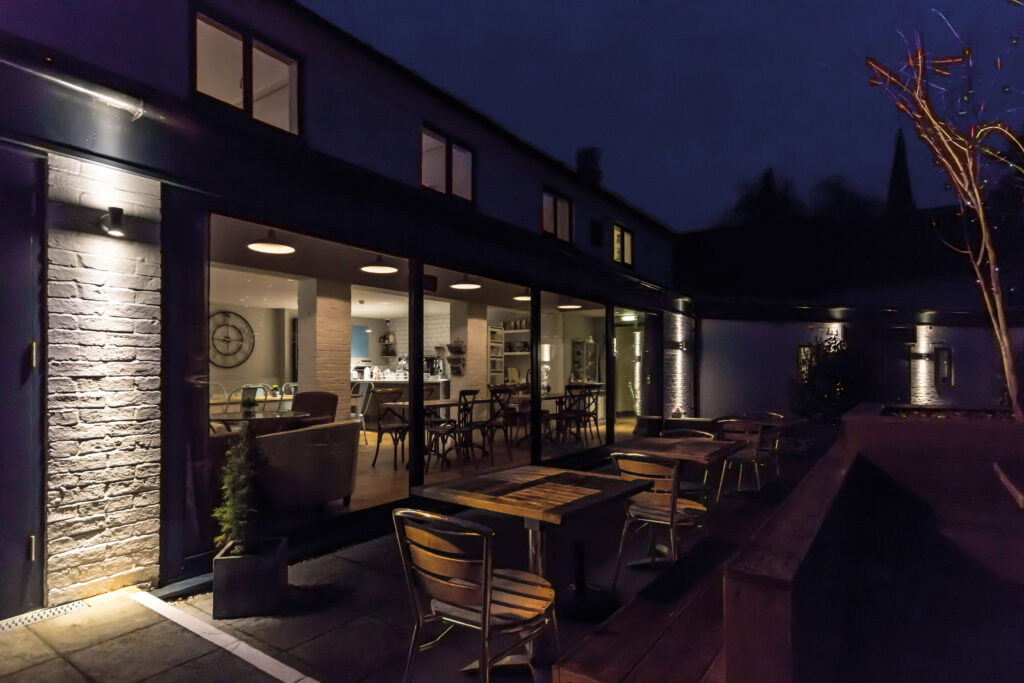As the evening draws in on those warm summer evenings, the right lighting scheme helps to create ambience for relaxing outside as the light fades.
While we need light for safety outdoors, too much will ruin any sense of intimacy that you want to create. You are not lighting a work area, so balance light and shade to create a layered look.
Read on for our tips to help you get it right.

Atmospheric Lighting
The first step is to consider the ambient or background lighting to provide a soft atmospheric feel. Depending on the location you may consider soffit downlights, ground lights, wall lights or even LED strip lights.
Next think about how you want to complement this. You might for example want to pick out certain features for interest, whether this is architectural, a key plant or tree or perhaps a water feature. But remember to use light sparingly, darkness provides contrast and is vital in any scheme.
While there are some areas that you might need to light for safety, when thought about these can form part of an attractive overall scheme. Highlighting the edges of a path or steps while necessary can also be done subtly and help draw the eye.
Working and functional areas
For functional areas, perhaps for outdoor cooking, you will need to provide a higher light output. Take a look at wall lights or downlights and angle the light where it is needed to avoid any unnecessary light spillage and glare.
Colour Temperature
To help relax we would normally recommend a warmer light source with a CCT (Colour correlated temperature) of 2700K or 3000K, in fact our lights go right down to 2200K. There are times when you might think about a whiter light, perhaps to pick out a feature or for a working area when you may consider using a 4000K light source.
Wildlife friendly lighting
Warmer colour temperatures are also better for wildlife. And the amount of upward light can have an impact on nocturnal animals so make sure that you angle the lighting to avoid any light spillage or glare.
Asymmetric lighting will concentrate the light beam where you want it. For downlights check the ULOR (Upward Light Output Ratio) of the fitting you are using. This tells you the proportion of light that a luminaire emits above the horizontal, so 0% means there is no upward spillage and no light pollution.


Garden lighting
Extending the lighting scheme into the wider garden creates interest for people relaxing with a drink or their food. Think about what you want to highlight in exactly the same way as before to highlight features or perhaps different textures on walls or fences. But remember to restrain yourself and make use of darkness to add contrast.
One good tip for the garden is to use spike lights. These come with 1 or 2 metres of flexible cable so you can change where you position them. You can use them as the finishing touch to a layered landscape lighting scheme or as the sole source of light to provide quick and easy, yet stunning results.
Control
No one will want their lighting on all night so you will need to think about control. In addition to simple on/off control consider dimming, light sensors and zonal control of different areas.
Whether you are considering designing a scheme for a customer, your own house or a hospitality business having a good understanding of landscape lighting can really make a difference to an outdoor area.
Looking for more advice?
Download a copy of our Landscape lighting guide



